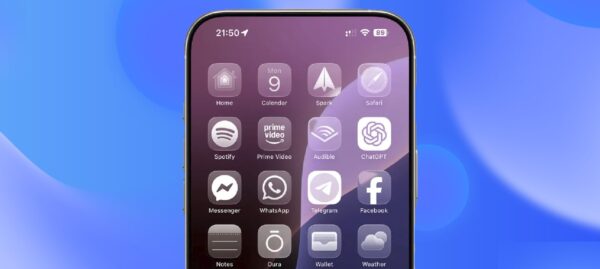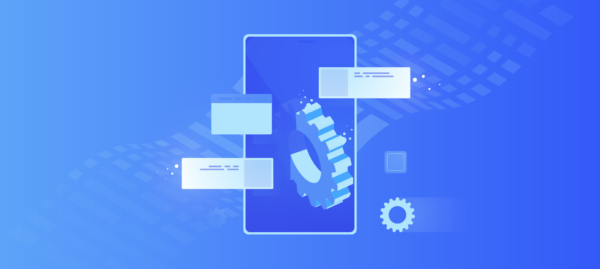How to Build an Application Modernization Strategy for Native to Cross-Platform Migration
Guilherme Rodrigues | Jul 29, 2025

Here at Cheesecake Labs, we’ve helped companies across various industries develop apps of all shapes and sizes.
And if there’s one thing we’ve learned about how to build an app, it’s that you’re going to need to make a lot of decisions.
So if you’re going to build your own app in 2023, what are the key things you’ll need to consider?
And more importantly, how do you make an scalable applications from scratch?
In this post, we’re going to cover everything you need to know, from the phases of building an app to the potential of emerging technologies to what frameworks you should consider and how you can best provide value to your target market.
When creating an app, you have options when deciding how you’ll work through these steps but also who will go through the process.
If you have the talent and expertise in-house you can take on the task yourself.
But if you don’t have the time or teams to build an app, or you’ve hit a wall midway through the process, you should consider working with a dedicated team of engineers.
Think of them as your outside-in-house team — an extension of your company working to build an app to drive innovation in your business.
At Cheesecake Labs, we’ve developed our Dedicated Teams service to help businesses build the right engineering teams and build apps efficiently — using the same foundation we’ll lay out in this post.
First time figuring out how to create an app from scratch? Learn how to start an app here.
There are countless reasons to invest in building an app. It can serve as its own endeavor, being the primary offering from your company. Or it could accompany another product or service, enhancing its usability. Or you could simply use an app to connect with customers over a new medium.
Whatever the case, the benefits of an app are clear. It can act as a unique revenue stream, put you in touch with a new segment of customers or users, and open up new opportunities for your business.
Whether you develop an iOS app or start programming for Android, knowing the basics of how to build an app is crucial.
To help you get started, here are the four phases of app development we use at Cheesecake Labs, regardless of whether we’re working on iPhone app design or otherwise.
First, we begin with product definition. This is the phase of development where we outline the basics of what we’re going to build. Is this going to be a tool for our users?
A new avenue for selling goods and services? Maybe it’s a service in its own right or a tool that will work with an existing product?
Whatever the case, this is where you come up with the name, core purpose, and initial goals for your app.
This first step is the most important part of learning how to build an app — without a clearly defined product everything else is much harder.
Next, we move on to product design. While the first phase is more conceptual, product design is where pen meets paper.
Here you’ll outline features, clear up navigation, and, importantly, determine how users are supposed to interact with the app.
That brings us to product development. This is where you move from the drawing board to the programming floor.
You’ll begin wireframing prototypes, building and testing features, seeing how your ideas function in practical usage, and more.
This is also where the first two phases of prep work start to pay off. The more work you invest in the first two phases, the more payoff you’ll begin to see here.
The last phase is product optimization. If you’ve ever built an app before, then you already know there’s no such thing as an app that works as soon as you finish developing it.
From there, you’re going to need to start testing it. That doesn’t just include removing bugs, though that is important.
In addition to that, you’ll need to eliminate features that don’t work, replace navigational elements with ideas that make more sense, and, in general, work on polishing your handiwork.
If you’ve already defined your app or have even started the design phase, that’s great! You’re well on your way to having an innovative app.
At Cheesecake Labs, we can help you build an app no matter where in the process you are. If you’ve already done the first two stages, we can help you build velocity and scale during the product development and optimization phases.
One of the key things you should know about how to build an app is that you need to balance providing value to your customers with your budget. Unsurprisingly, designing an app can cost a lot.
That’s why the team here at Cheesecake Labs doesn’t necessarily vouch for creating a minimum “viable” product (as is standard), but instead creating a minimum “valuable” product.
A merely viable product risk being lackluster, especially when compared to competitors. Instead, shoot for making the most valuable product that your team is capable of.
To do this, you’ll need to begin by answering these important questions.
Gather your team and answer these questions! Then, move forward with development based on these answers.
Once you figure out how you want to address the questions above, you need to decide what types of technology you want to include in your app.
When you’re designing an app for 2023 and beyond, it’s a good idea to consider some new technologies to offer your users something unique. Here are some to consider.
Although it’s been around for a few years, voice search is becoming popular with users. So, it’s a good idea (and a relatively simple ask) to incorporate this tech when deciding how to build an app.
Another groundbreaking technology that you can take advantage of when designing an app is blockchain. It’s definitely not a one-size-fits-all solution, but it can be an elegant option for various situations.
Those wondering, “How do you create an app?” might find that IoT is a technology that fits neatly into their concept. IoT is an emerging tech paradigm that uses multiple small, data-driven devices connected to the internet.
When deciding on how to build an app, you’ll also need to consider the technology it will be built upon.
Since switching from one framework to another isn’t exactly a walk in the park, you’ll want to choose wisely to get it right from the start.
At this point in the app-building process, we always recommend reaching out to a team of professional developers who can help you decide which technology will be best for your specific requirements and the product you are looking to build.
They’ll know what will work, and what won’t and can help guide you towards the right option.
Now that you know more about how to build an app, we’ll leave you with a few of our favorite tips for designing an app.
Edge cases are scenarios that can crop up during app use that you aren’t expecting.
These could include someone using your app in a way it’s not meant to be used, a resource your app is dependent on becoming unavailable, or users simply don’t understand what to do.
Anticipating edge cases is a key aspect of how to build an app.
While looking at the nitty-gritty details of how to build an app, it can be easy to overlook the importance of project management.
Well, we can tell you from experience that you don’t want to do that! You can learn more about how Cheesecake Labs approaches project management here.
It might not seem ideal, but nearshoring can be a viable option for those working with a tight budget.
There are experts worldwide, and by shopping around, you can get the best deal for your project. Something to consider when approaching to create an app.
Learning how to create an app can be an overwhelming process. But the good news is that you don’t have to do it alone. You can work with a Clutch-rated developer like Cheesecake Labs, simplifying the process and ensuring your success.

No matter where you are in the process, we can help you build an exciting and innovative app for your business.

Jeremy Stephan is no stranger to building digital products. In fact, he's worked with Disney, NBC, Mercedes-Benz, HotelTonight, and many other companies in helping to guide them through the app design and development process. Jeremy has led client engagement in the digital space for over 10 years and served as a mentor within the TechStars network.

Caio Luz | Jul 25, 2025

